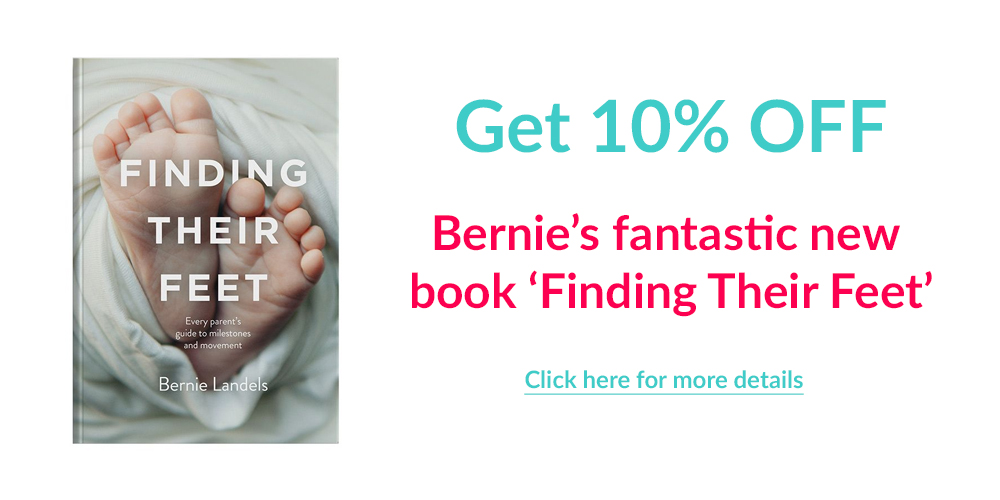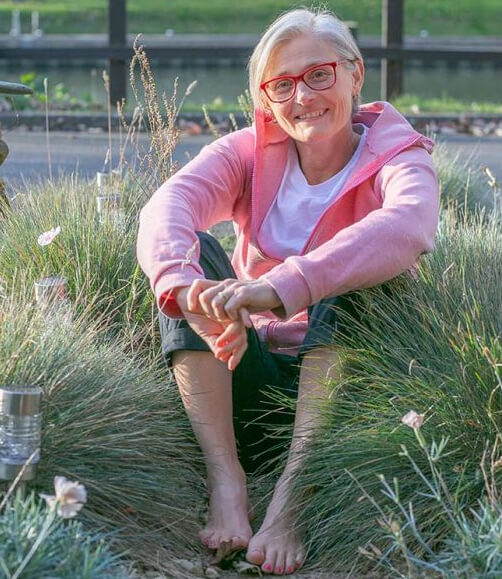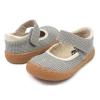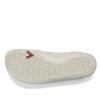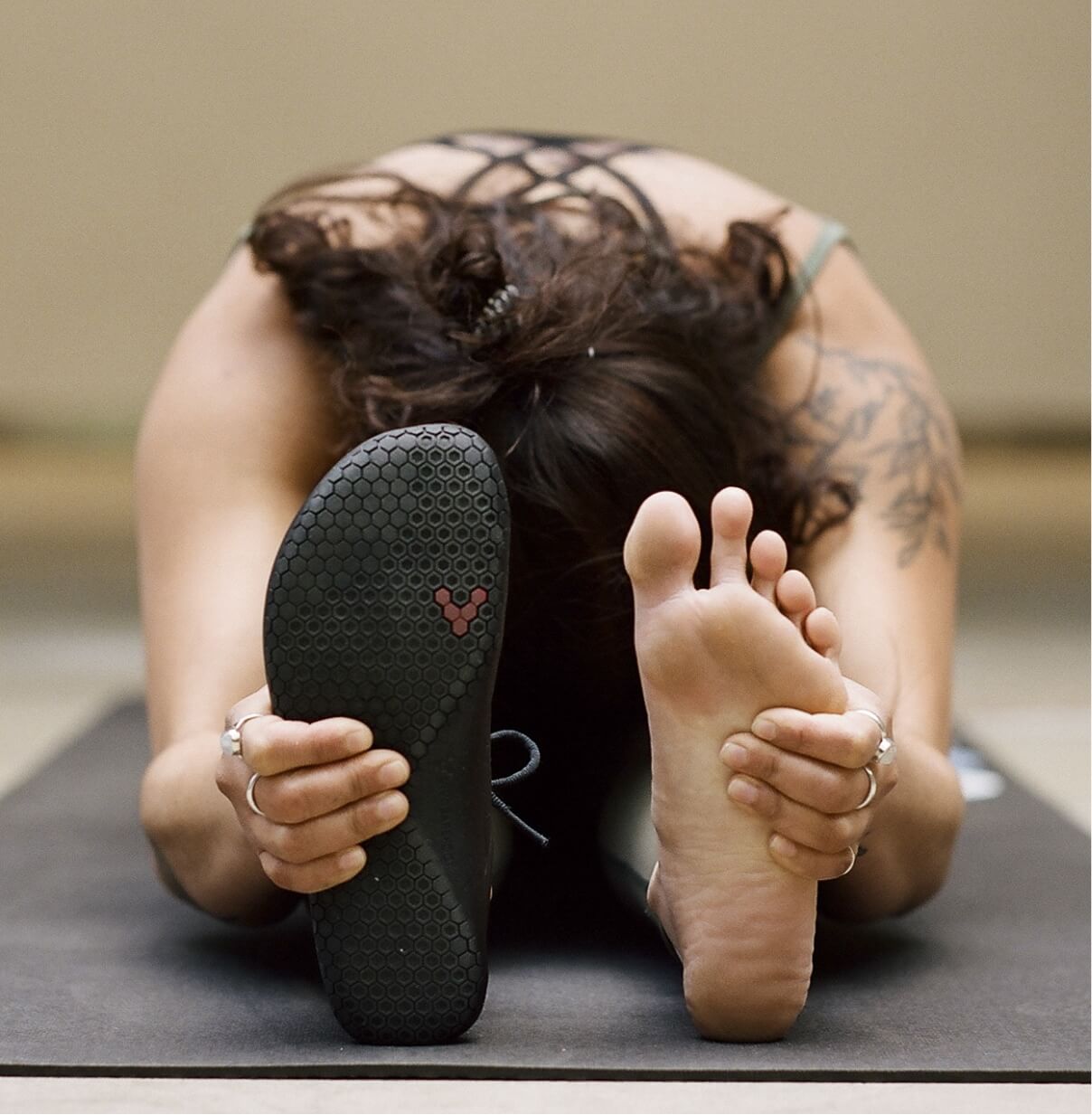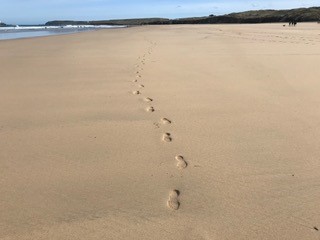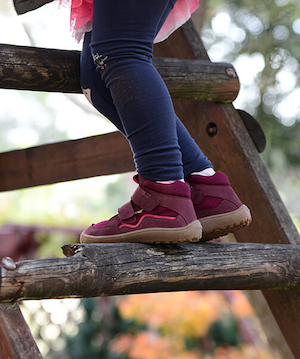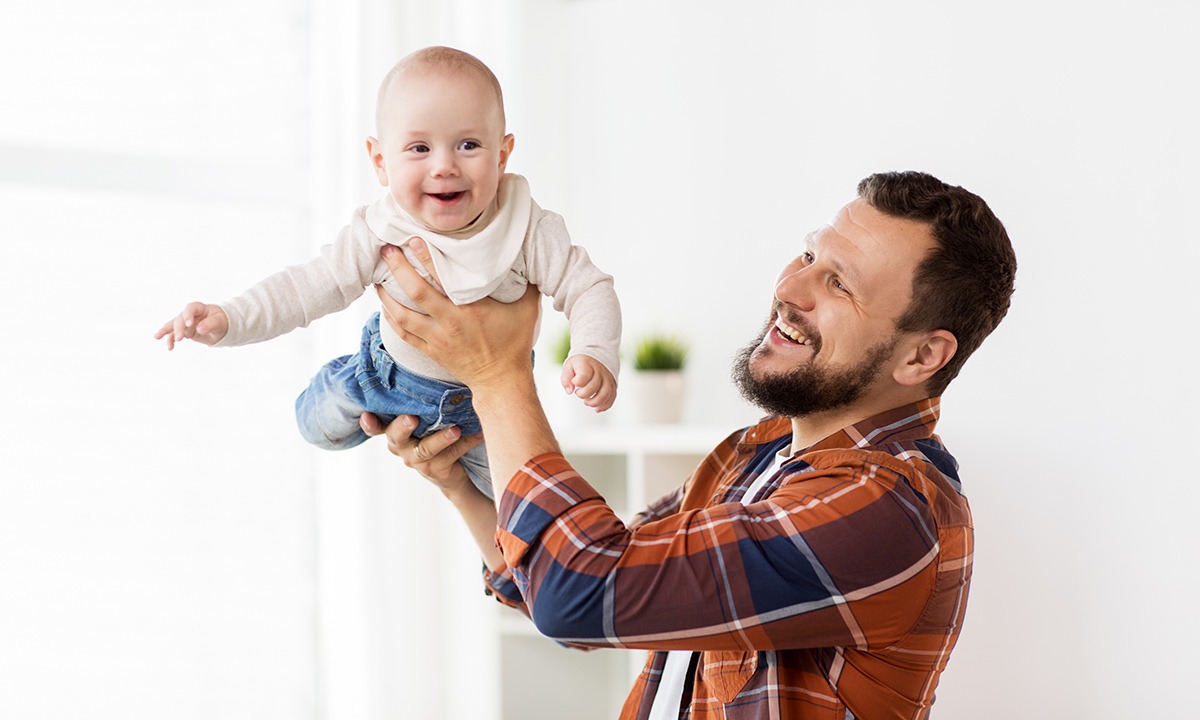
We are delighted to be working with Bernie Landels, an internationally-certified Infant Massage Instructor (IAIM) since 2002, and stocking her new Book, Finding Their Feet. Bernie has kindly agreed to write some guest blog posts for us as well, and her second contribution in the series is a Father's Day special!
“Throw me up again dad”!
It's Father's Day (UK) on 19 June 2022, so to all fathers out there did you know that the interactive physical play you as a parent have with your child in the first couple of years is not just for fun! You are building a solid foundation within your child. What do I mean?
Cambridge University recently joined forces with The Lego Foundation to look specifically at early ‘father-child’ play over a 40 year period and what impact it had on child development.
It’s all good news! The review found most fathers played with their infants (0-3 years) every day, with rough and tumble play, chasing, bouncing on the knee and activities that generate fun through touch and movement to be the most popular. They linked this physical type of play to helping with a child’s behavioural and cognitive development. Physical play by fathers lay great foundations.
To understand this we’re going to jump to the brain first.
Nathan Wallis, neuroscience educator from New Zealand divides the brain into four areas of growth: survival, movement, emotional and thinking. .
The first 6 months your baby relies on you for survival, to feel safe and secure. From 6 - 18 months the movement brain kicks in, the main focus is to get up on two legs. Have you ever thought about what it takes to go from blob on the floor to confidently chasing the cat?
Think about training for a marathon, for the average person who has not run before it takes about six months of training full of physical hard work, determination and motivation. Learning to walk is also physically challenging and your infant has an inbuilt training programme, their survival and movement brains are their personal trainer and you provide their gym and are the coach! More on that shortly…..
Every waking moment your infant is training and learning.
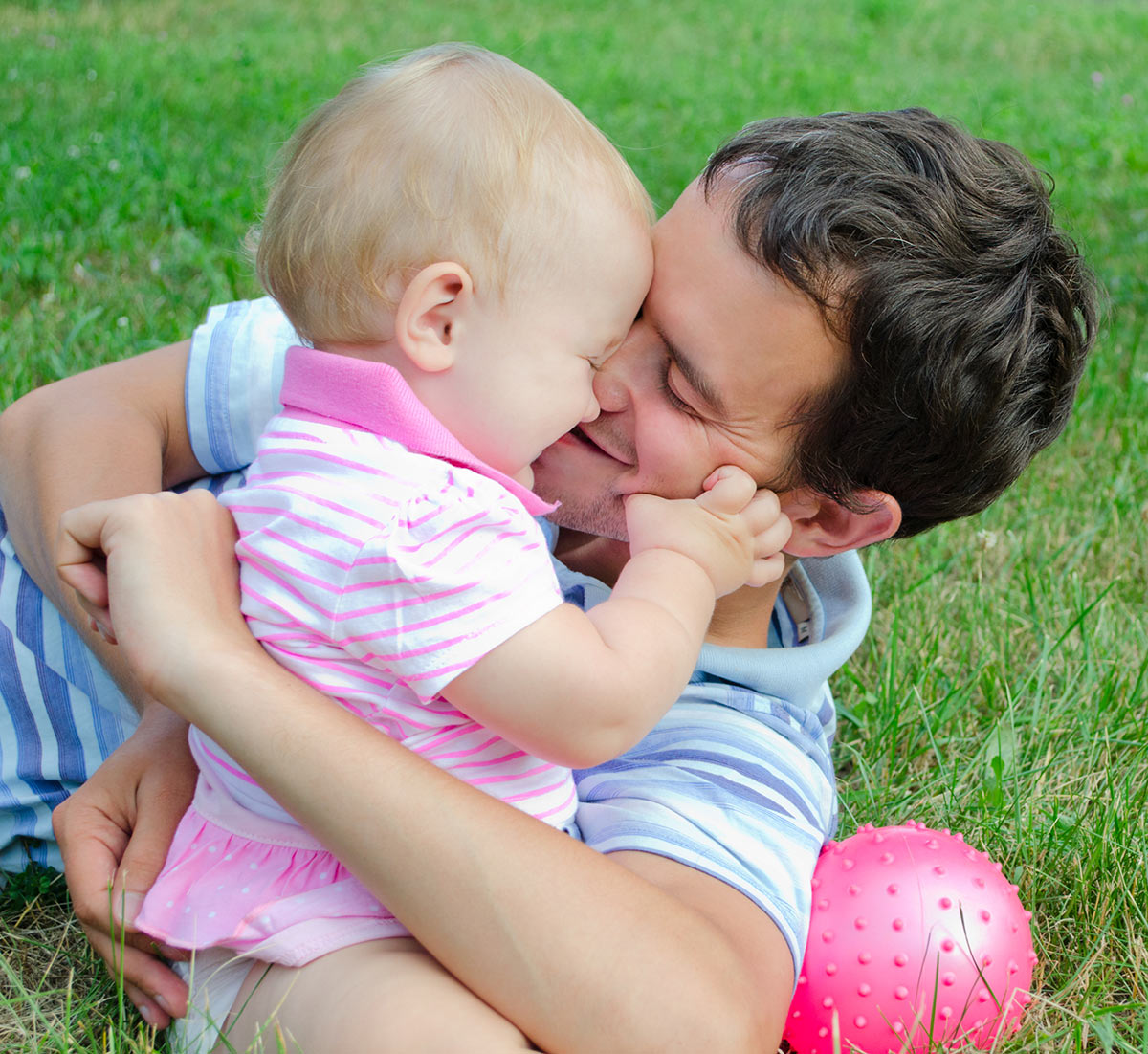
Survival brain relating to movement
At first the survival (hind) brain provides involuntary uncoordinated movements to help with wiring of their body. For example: your baby kicks and their foot hits you or the floor, a message goes back to the brain about the result - how far they had to kick to reach something, the force required to make contact, what the impact felt like and so on.
There are other movements generated from the hind brain in the form of primitive reflexes. The most familiar one for parents is the ‘grasp reflex’ when your baby grabs tightly on to your finger, or hair! These reflexes are predominantly for survival, such as the grasp to hold on to you. They also lay the foundations for bonding, head control and posture.
The movement brain
As your baby transitions from involuntary to voluntary control the movement part of the brain takes over. Think about rolling, often the first time your baby rolls it’s a surprise to them (and to you!). They have been practicing different movements in the build up but until they roll they don’t know what will happen. They’ve just informed the brain that if they do x, y & z they change position, and we know there are many ways to roll (if you’ve forgotten get down and try rolling) so the brain still has a lot of work to do, and then of course there is rolling back!
Every movement and milestone your infant achieves is a conversation between the body and brain. We see the external results of them rolling, commando crawling, rocking on all fours to crawling and climbing. Then standing, cruising, squatting before they take those first drunk-like steps.
What we don’t see is the development of the vestibular (balance) system, hand-eye coordination, spatial awareness and more…there is so much going on physically in these early years. Let’s look at how physical play lays great foundations, you as the gym provider and coach.
Gym and coach
As the provider of their gym (you and their environment), safety comes first of course, followed by stimulation and experiences. Your baby needs input, though it is a bit like Goldilocks and the three bears - it has to be just right. Being attentive to when your infant has had enough is important so take time to watch for the signals and cues of tiredness and over-stimulation.
Developmentally appropriate physical play during this time is crucial to assist with their success and confidence. Here are some ideas, keep in mind that activities and play in the early stages can continue as your baby grows and develops. Let’s lay some great foundations:
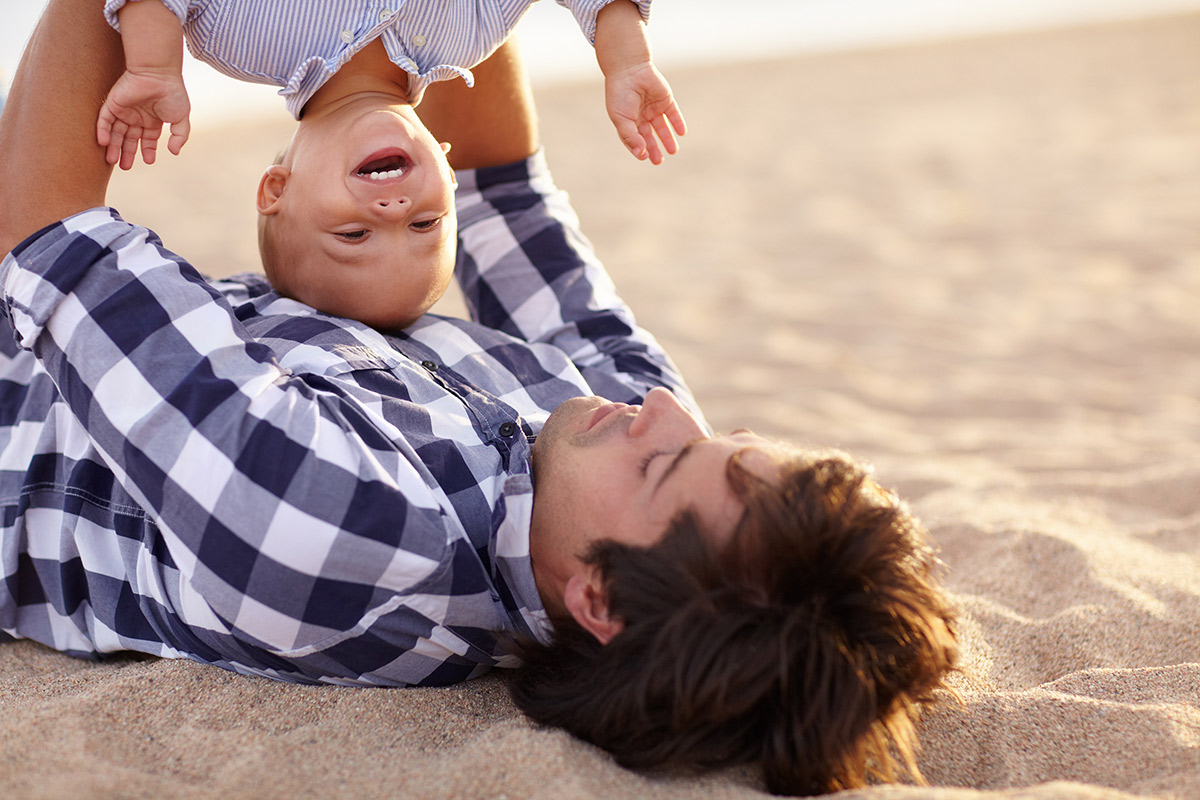
Blobs on the floor
Early play comes in the form of you pulling faces, tickling games, blowing raspberries on their tummy, swinging and dancing with them cradled in your arms, and floor time. Once they have developed head control you can fly them above your head and bounce them on your knee. Get creative within their capabilities.
The floor is the best place for them to explore their own spatial awareness and how their body can move. It is also the most effective place for all those primitive reflexes to integrate, they need to be able to move freely. Yes, tummy time is important, little and often, with a variety of places for tummy time will help them build resilience. It’s all about training - hard at first but becomes easier over time.
And remember barefoot is best, we want to stimulate all the nerve endings on the feet with different textures and sensations to feed the brain.
With summer in the UK trying it’s hardest to arrive, take your baby outdoors to experience grass, different sights and sounds and openness.
Early movers
Once rolling, commando crawling and sitting by themselves (which means they can get to the sitting position endnote be put there!) you can start more floor time tumbling, go gently at first so as to gain trust and build their resilience.
Small throws in the air will excite them and builds trust (that you will catch them). Keep the swinging, rocking and bouncing going. Get down on the floor with them.
Create a safe environment, place objects just out of reach to motivate them to move. And get them outdoors, and remember the tummy is the best position to commando crawl and eventually crawl so encourage this position.
Continue to keep the feet free both indoors and out for maximum input and to grip as they tummy shuffle forwards across the floor!
Crawling and climbing
Despite what some say, crawling IS an essential movement for both physical and brain development. Successful crawling also means that certain primitive reflexes have been able to integrate to allow for this coordinated way of locomotion.
Crawling opens up a whole world of play, from crawling over you to chasing you (get down and crawl, it’ll do you the world of good!). Have them hang off you or ride on you as you crawl. Crawling enables them to escape so chasing games and hide and seek are great fun.
Climbing takes them to higher levels and a different view of the world. Supervised climbing with support and teaching how to descend are key to building confidence. Create obstacle courses, these help to start develop problem solving and of course get them outdoors. Let the hands and feet explore grass, gravel, sand and mud!
If footwear is needed for protection outdoors then check out Happy Little Soles ‘pre-walkers’.
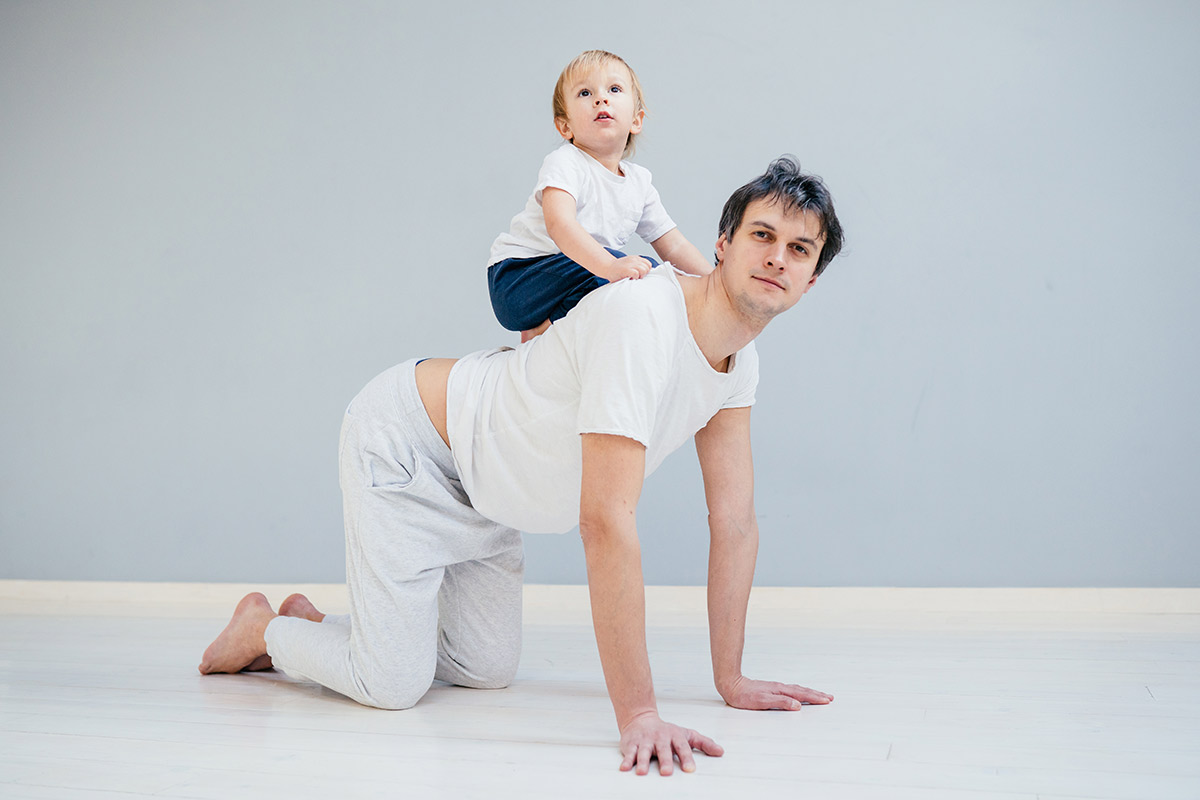
Standing and cruising
Don’t rush your infant from standing and cruising. As tempting as it is to grab their little hands and walk them - stop! This stage is part of their training regime. It is their first position fully upright in gravity balancing on two feet, give them time to stand, then cruise on their own as this is vital for establishing balance, control and for strengthening their body.
You can encourage them by placing toys on tables that they can reach up to. Play music to bop and dance to as the hold on to the sofa. When they crawl over to you and pull themselves to standing pause before bending down to pick them up, allow them to cruise around you. And don’t panic when they plop onto their bottoms or hands, this is training for falling which they will do a lot of when they start to walk!
And remember the outdoors provides different things to stand up and cruise around from garden edges to a tree. Let them explore, ‘pre-walkers’ footwear for protection if needed.
Walking
On your marks, get set….go! I recall my first son (now 22) taking his first steps and he really did look like a drunk! Staggering to the left and right, arms raised and flailing to try and provide balance, ready to catch himself should he fall.
It is important that when they start taking those first steps again we are hands off, avoid grabbing their arms and steadying them. They need to continue to develop their own sense of balance, make connections between their feet and ground, and how their arms can steady themselves.
It will take a few years for your toddler to become confident on two feet and physical play continues to be important. Don’t be surprised if they resort to crawling in the beginning, until they master walking it’s their fastest way of getting around!
Obstacle courses, the backyard, playgrounds, the beach and forests. There are so many places to explore and see, and so much fun to be had playing together. Check here for footwear suitable for early walkers, go for more of the soft soled shoes like Tikki Kids Ziggy.
In my book ‘Finding Their Feet’ I go more into each stage of development, primitive reflexes, movement and shoe choices. There are lots of ideas to get you feeling confident and knowing that you are actively laying those great foundations. My website has more resources and information.
Back to the brain
It is important for all of these milestones to take place to fully develop and integrate the survival and movement parts of the brain. These first 18 months to 2 years of play and exploring lay the foundations for the next parts of the brain to develop - the emotional (limbic) and then the thinking (cognitive).
This explains the results of the research where it was found that physical play helped with a child’s behavioural (emotional) and cognitive (thinking) development.
Development of the brain happens sequentially, from the bottom up. The survival and movement parts of the brain need to be fully developed and integrated to allow for the continuation and maturation of the higher brains.
Physical play and interaction with your child as they grow has benefits beyond what we see. As provider of their environment (gym) and coach of experiences and interactions you have a key role to play.
Let’s flip the coin though - have you ever thought about copying your child’s movements, joining them as they roll, crawl, run, jump and skip as a workout for yourself? If you let them they will become your coach to keep you moving.
Finishing on firm foundations
To support these foundations and building body-wide neural connections your child needs to find and feel their feet. Being barefoot as much as possible in the first 5 years is important both for input to the brain and for healthy posture. Your child’s foot does not fully mature until late teen years, their brain even later.
‘Barefoot’ or minimal shoes provide protection, check out Happy Little Soles’ growing adult range for something for you and enjoy the wonders of the body as you find your feet again!
What about mum?
While it has been shown that physical play by fathers lay great foundations, mums can also get physical. I enjoyed being active and playing physical games with my two boys when they were little. Then when their father left I had to multi task, and be the nurturing mother and engage in the physical way they both needed. So regardless of whether your child is growing up with a mum and dad, two mums or dads, or you’re a single parent - physical play is vital in the early years and beyond.
What’s your favourite physical game you play with your child/children?
Bernie Landels
Amodia-Bidakowska, Annabel; Laverty, Ciara; Ramchandani, Paul G. (2020). Father-child play: A systematic review of its frequency, characteristics and potential impact on childrenâs development. Developmental Review, 57(), 100924–. doi:10.1016/j.dr.2020.100924
 Free UK Returns
Free UK Returns

